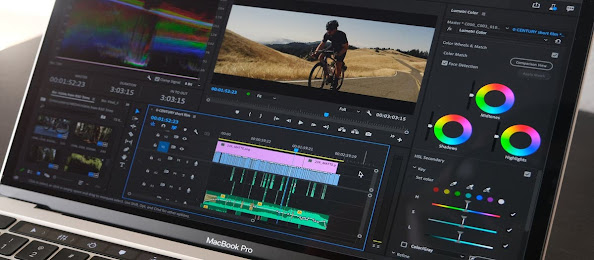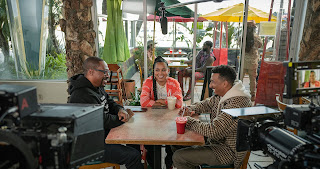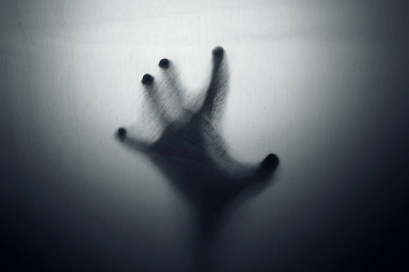Critical Reflection
Link: https://docs.google.com/document/d/1D1EKrIx0YmH9RTIADRH1n7b1hGkrG5TUnLtRnNhMeX8/edit
How do your products represent social groups or issues?
In my group’s short film, The Lull, it challenges the role a detective plays. In movies or short films in this case where the detective turns out to be the bad guy challenges our conventional perception of heroes and authority figures. This departure from the expected narrative trajectory challenges our trust in them and the meaning of being in charge. They reveal that even those we admire can have flaws and mistakes. This short film prompts us to question the effectiveness of our power systems and their fairness, reminding us that sometimes those in charge aren't as perfect as we might expect. This can symbolize the abuse of power within institutions and the betrayal of public trust, reflecting real-world instances of corruption and misconduct within law enforcement.
Moreover, the detective's dual role as investigator and killer raises questions about identity, societal perceptions, and the potential for hidden motives. The film highlights the dangers of relying on surface appearances and the inherent biases that shape our understanding of others. This exploration of hidden motives and psychological depth adds layers to the narrative, inviting viewers to reflect on broader societal issues such as prejudice, bias, and the consequences of snap judgments.
Additionally, the detective's actions reveal psychological complexity within the family unit, involving betrayal, manipulation, and past traumas. The narrative delves into suppressed truths and their impact on familial bonds, emphasizing the pervasive nature of domestic violence and the dynamics shaping family relationships. Through this lens, the film becomes not only a commentary on individual morality, but it introduces societal discussions on the complexities of familial dysfunction and the quest for reconciliation and healing. This entire narrative adds a further dimension to the story.
How do the elements of your production work together to create a sense of ‘branding’?
In order to create a sense of branding for my short film a website and postcard was created. The genre of this short film is thriller. The colors that are usually associated with this genre are red, orange, yellow, or black. These are used to create a sense of danger by evoking fear, anxiety, or threat. These colors can also contrast with other colors that suggest safety, calm, or innocence, such as blue, green, or white. So when making the postcard and the website it was very important to use the right colors, the font, how the website and postcard will look. This was so my group can have a consistent theme throughout our elements.
When making the website my group wanted its design to mirror the aesthetics of the short film, reinforcing its branding through typography, color schemes, and imagery. My group also wanted to have bold text to really hit the viewers. My group also decided to make a slogan or phrase to entice the viewers of the website. After much debate my group decided on “WHAT HAPPENS WHEN A TEEN IS TRAPPED WITH AN EERIE DETECTIVE IN HIS HOUSE? WAIT TO SEE!!!” The all capitalized letters in the phrase adds emphasis and intensity, gaining attention and conveying importance. They make a statement, create a distinctive visual impact, and leave a lasting impression. This makes the message stand out and help to point out the plot of the short film.
A postcard for a short film can effectively communicate its brand through imagery, typography, and messaging. It conveys the film's tone, themes, and aesthetic, reinforcing brand recognition and anticipation. When making the postcard my group wanted to use a photo from the set of the short film for the front. I decided to use the setting of where my character, Detective Brown, was interrogating Teo’s character, Martin Romero. For the font, my group chose red for the text color. Red helps to entice a person. Also, this color fits in with the aesthetic of the short film, especially since there was a killer involved with the plot. On the back of the postcard, black was decided to be used as the base color and white was chosen as the text color, which contrasts from the black and helps to differentiate the two sides. The back of the postcard includes the showtimes of the short film, where it’s located, the link to the website, the Instagram and TikTok accounts affiliated with it, and a qr code so that the social media accounts are easily accessed.
Social media platforms help the film's branding reach by allowing direct interaction with potential viewers through posts, trailers, and user-generated content, ensuring the film remains prominent in the audience's online experience. Additionally, physically receiving a postcard adds a personal touch, creating a deeper connection between the audience and the film's brand, enhancing its impact and memorability.
How do your products engage with the audience?
The Lull engages with its audience by having a captivating opening sequence. This opening sequence in this short film helps to set the tone and introduce the main setting. In any film music is a powerful tool for engaging the audience by heightening tension and enhancing suspense. In this case my group wanted to use an eerie melody with ominous chords. That is when I found “Anthem (from US)” by Michael Abels… it had the vibe and energy my group was looking for. This song has an ominous aura, amplifying tension and suspense. Its haunting melodies and rhythmic intensity heighten the psychological unease, immersing viewers deeper into the unsettling atmosphere of the narrative. Even though it’s just the introduction, the music used in it helps to keep viewers on the edge of their seats. The sound effects in the short film that are used also heighten tension and build suspense. The ominous music, sudden noises, the grandfather clock ticking in the back of some scenes, create an atmosphere of unease.
How did your research inform your products and the way they use or challenge conventions?
Since The Lull is a thriller film, which I have some experience with from my final project from last year. I took some of my previous knowledge with thriller films like Saltburn, Talk to Me, Don’t Worry Darling, Old, The Menu, and the Scream franchise. I personally love thriller films and the standard conventions they have. However, since this is a short film and not a standard hour and 30 minute plus film… I had to do some extra research regarding the short film area. I started watching short films that I found on YouTube and other places. In my research I found short films like Jumper, Afraid, Diaspora, Intrusion, and Deja Vu.
I then research the convention these short films have with camera angles and shots. In thriller films camera angles and shots are used to intensify the audience's emotional response by creating tension, suspense, and disorientation. Thriller films use pans to add urgency and chaos, and over the shoulder shots are used to to focus on a character's face while incorporating a small part of another character's body. Low angles make characters appear imposing, while high angles create vulnerability and power dynamics. Close-ups heighten intimacy, while quick cuts and shaky camera movements add urgency and chaos. This manipulation of perspective amplifies the psychological turmoil of the genre. I added this convention into my film mainly after the opening sequence by using over the shoulder shots when my character was interrogating Teo’s character, low and high angles were used after my character revealed his true intentions and the power shift started to happen.
Another convention that I did some research on was editing. Editing in thriller films serves to intensify suspense and maintain momentum. Quick cuts and pacing keep the audience on edge, heightening tension during pivotal moments. Strategic use of jump cuts or montages builds anticipation and disorientation, amplifying the sense of unease. Jump cuts are seen in almost every thriller film, no matter the length. Careful manipulation of timing and sequencing, editing controls the flow of information, teasing out clues and revelations to keep viewers engaged. When editing the short film I made sure to include jump cuts, shot reverse shots, action matches, cross-cutting, and inserts. Editing enhances the overall thrill and impact of the film.



Comments
Post a Comment